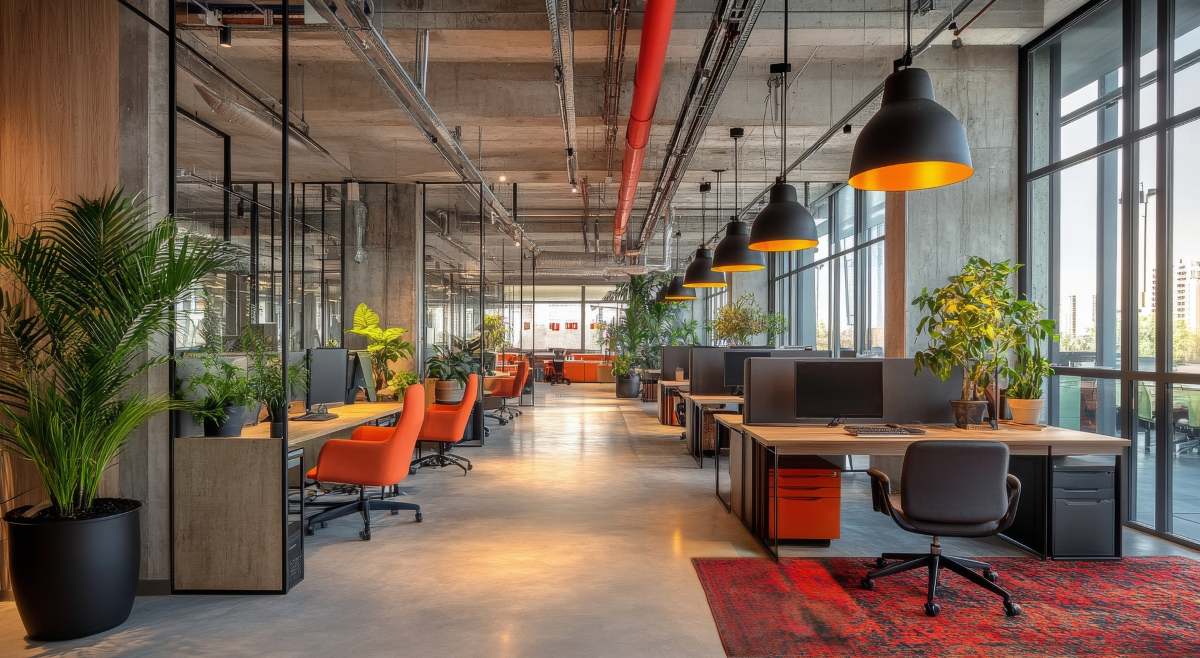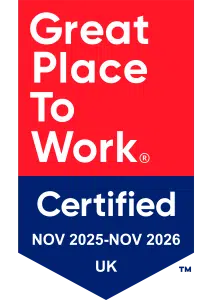How workplace design affects employee productivity and wellbeing

The spaces we work in shape far more than our daily routines. They influence how we think, how we feel, and how we connect with others. Workplace design, once treated as a matter of aesthetics or cost efficiency, has become central to conversations about productivity and wellbeing.
And it makes sense. People spend a large portion of their lives in offices, studios, or hybrid environments. The way those spaces are designed will either enable people to thrive - or quietly drain their energy.
Why Design Matters for Productivity
When we talk about productivity, it is tempting to focus solely on processes and technology. But the physical environment provides the foundation for all of that. Poor lighting, uncomfortable seating, or endless noise interruptions make even the most motivated employee less effective.
By contrast, spaces that balance comfort and focus can amplify performance. Think of it less as “making things look nice” and more as “removing unnecessary friction.” A workplace that supports different types of work - deep focus, collaboration, informal conversation - allows employees to choose the setting that best fits the task.
The Wellbeing Connection
Workplace design does more than help people work faster; it influences how they feel. Natural light, for example, has been linked repeatedly to improved mood and better sleep quality. Ergonomic furniture reduces strain and fatigue. Even colour schemes play a role in shaping atmosphere and energy.
Wellbeing and productivity are intertwined. People who feel physically comfortable and psychologically supported are better able to sustain high performance. Conversely, a workplace that neglects wellbeing risks higher absence rates, disengagement, and attrition.
The Shift to Hybrid
Hybrid working has reframed the entire conversation about office design. The office is no longer the default location where all work happens. Instead, it must justify its relevance by offering something people cannot easily replicate at home.
That “something” often takes the form of connection. Offices designed with collaborative zones, informal meeting areas, and social spaces encourage relationships that sustain culture. If home is the place for focused solo work, the office becomes the place for shared creativity and community.
But design cannot lean only into collaboration. Hybrid workplaces must also provide quiet areas for concentration, otherwise employees find themselves caught between the distractions of home and the distractions of open-plan offices.
Balancing Openness and Privacy
Open-plan offices promised transparency and collaboration, but in practice they often created constant interruptions. Productivity dipped, and employees searched desperately for corners of quiet.
A more nuanced approach is emerging: layouts that combine open zones with enclosed rooms and semi-private spaces. This balance enables both chance encounters and focused work. Acoustic panels, soundproof pods, and flexible partitions are not extravagant extras; they are practical tools for protecting attention.
Technology’s Role
Workplace design today extends beyond furniture and walls. Technology integration shapes how spaces are used. Reliable Wi-Fi, video conferencing facilities, and digital booking systems make hybrid collaboration smoother.
Equally important are tools that reduce friction rather than create it. Technology should blend seamlessly into the environment. If employees spend more time troubleshooting meeting-room systems than collaborating, design has failed. The goal is simplicity: tech that supports productivity without drawing attention to itself.
Wellbeing Beyond the Physical
Wellbeing is influenced not only by light, furniture, and layout but also by the signals a space sends about culture. Does the workplace encourage movement, with stairs and walking paths rather than static desks? Are there visible cues that inclusivity matters, such as accessible layouts and diverse artwork?
These subtle design choices reinforce psychological safety and belonging. They tell employees, without words, that their experience matters. That sense of care strengthens engagement far more than abstract values pinned on a wall.
The Human Layer
It is easy to focus on the physical, but workplace design must also align with behaviours. A beautifully designed office will not transform culture if leaders discourage flexibility or over-schedule meetings. The environment should enable - not replace - healthy ways of working.
This is where design intersects with the importance of employee experience. When space, culture, and leadership align, employees feel supported holistically. When they do not, design risks becoming little more than surface-level branding.
Communication in Designed Spaces
Physical environments also affect how people communicate. The placement of desks, availability of meeting rooms, and design of breakout areas all shape interaction patterns. Sometimes small shifts - like creating visible, comfortable spaces for impromptu discussions - encourage collaboration that formal meetings never quite achieve.
In this sense, design becomes part of improving staff communication methods as much as HR policies or leadership training. It is a tool for shaping how conversations happen, where they happen, and how inclusive they feel.
Final Thoughts
Workplace design is not decoration; it is infrastructure for human potential. When it prioritises both productivity and wellbeing, it enables employees to contribute their best without compromising their health.
The most effective spaces are those that reflect the complexity of work today: focused yet flexible, private yet open, physical yet digital. They are designed with intention - not only to meet business goals but to affirm the experience of the people who bring those goals to life.
In the end, design is less about buildings and more about behaviours. Spaces influence how people think, feel, and connect. Getting it right is not just about aesthetics; it is about creating conditions where people can do their best work and feel good doing it.
